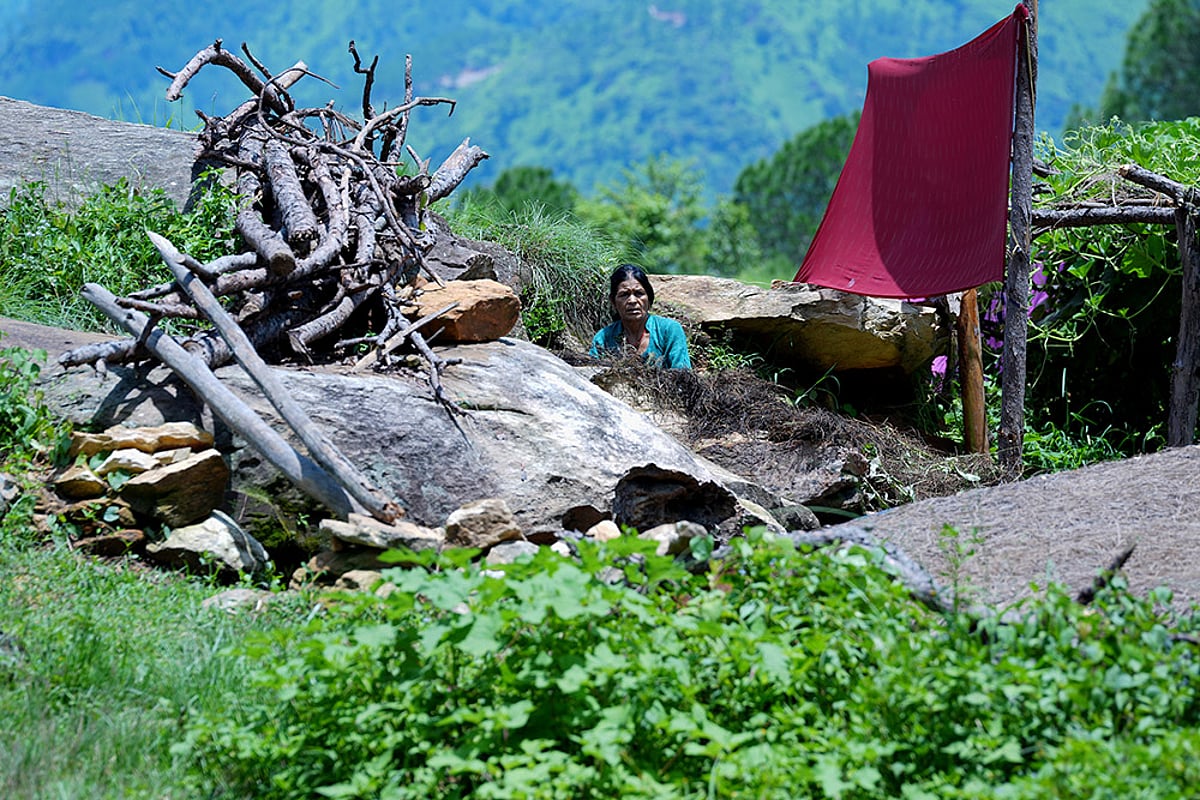A Raji woman in Kulekh. Rajis are members of a "Primitive Vulnerable Tribal Group", one of the many endangered Scheduled Tribes in India, with just 1175 documented members of the tribe left in Uttarakhand.

Deepa Devi, 55, lived in the remote Altadi village. She says that there are no jobs in the area for the youth or women.

A Raji family in the remote Kimkhola village, one of the eleven hamlets spread across Pithoragarh and Champawat districts of Utttarakhand, just a few kilometers from the Nepal border.

Chandra, 19, from Kimkhola, can read and write in Hindi and knows how to speak Raji. Last year, she had been part of a group teaching Raji language to nearby kids from her community but this year, she had to drop out of school because of her family's financial condition. She works as a farm hand now.

A Raji woman inside her home in Kimkhola. Only 20 percent of Rajis own land and until rceneltuy, many lived in houses made of mud, wood and bricks with roofs made of tarpauline or asbestos (often provided by local NGOs like ARPAN).

Even a few decades ago, Rajis who are traditionally a community of nomaid hunter-gatherers, lived inside naturally formed caves called 'Odyars', and remained out of contact with other communities or tribes.

With successive waves of government-led "assimilation" and "development", Rajis have now migrated downward from hills and settled in mixed population villages. Their scoio-economic condition, however, has not improved much. Seen here is a Raji woman hanging a stash of wild garlic she had grown locally at home.

An elderly Raji woman, who walks about 6 kilometres daily to from her home in Kulekh to her ancestral farm in Altadi, says that Raji women are skilled craftsmen and says that many like her would benefit from skilling programs that can help her get a more stable job.

Community leader and Raji language enthusiast Tulsi Rajbaar, 30, stands outside her mud and wood hut in Chakarpur village of Uttarakhand, weeks after floods ravaged the homes of Rajis in the low-lying village a few kilometres from Tanakpur.

A Raji man makes an appeal to save the endangered Raji language in Altadi village of Pithoragarh district in Uttarakhand.

Kheema Devi, 50, a cattle herder and farmer, is building her new home in Kulekh with stones provided by the government. The Rajis are excellent masons and do their own construction work.

Chanchala Devi, a Raji woman from Kulekh village in Pithoragarh, says her ancestors migrated downward from Altadi village in search of work but many of them still have farms in Altadi, located at a treacherous five kilometres trek from Kulekh.


















